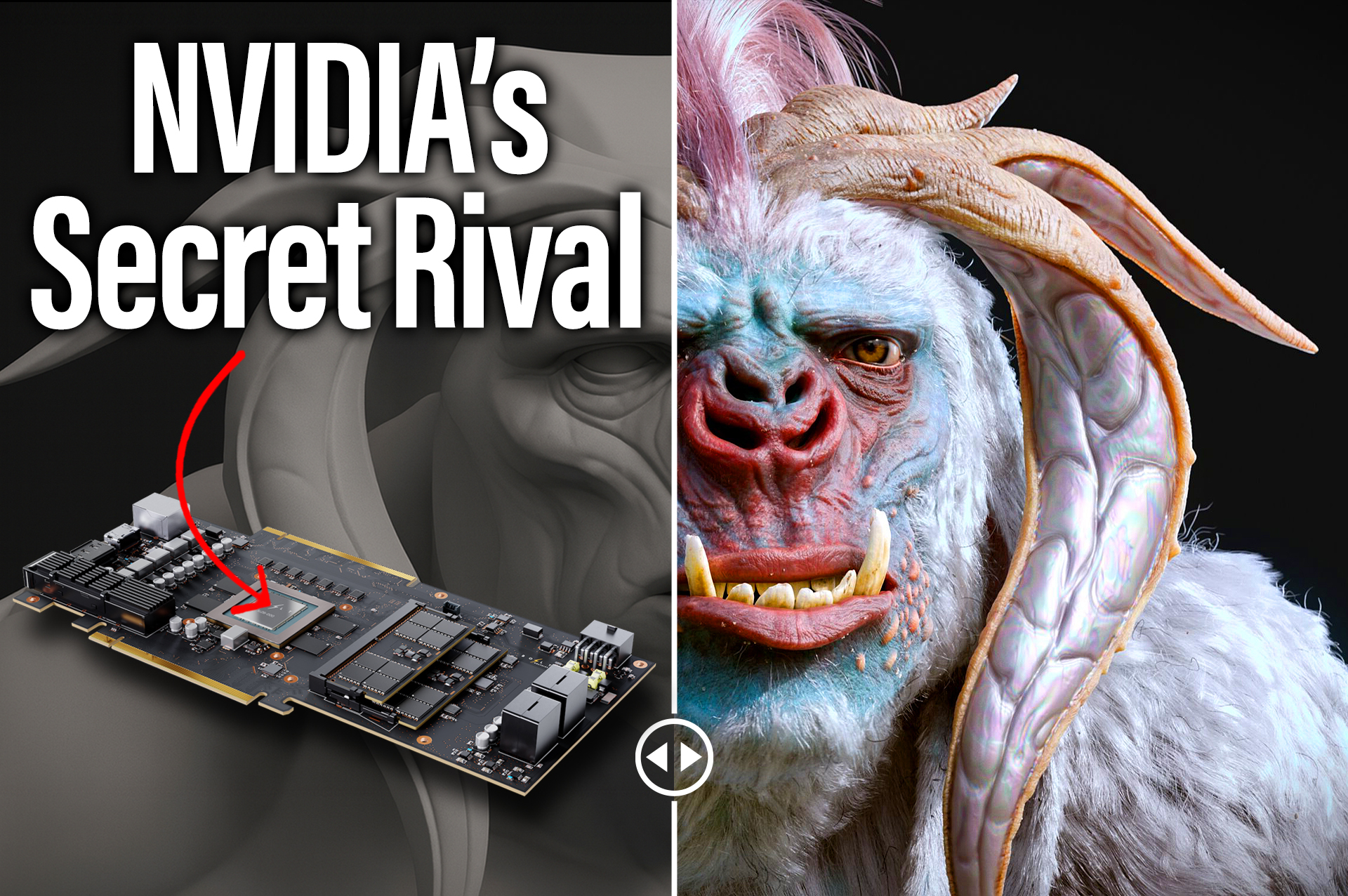Products
Solutions
Published
14 October 2025
Written by Harry Forster
What do you do when your wife’s rendering software is so slow it makes a £2,000 Nvidia card feel like a potato?
If you’re Darwesh, you don’t just complain, you build your own GPU from scratch. That’s the origin story of the Bolt Graphics Zeus GPU demo, a radically reimagined architecture designed to wipe the floor with legacy designs.
The boldest claim? It’s up to 300× faster than Nvidia in certain real-world tasks. The architecture? Chiplets instead of monolithic dies. The goal? Total scalability and performance with lower power and no baggage.
The Problem It Fixes
GPUs haven’t really evolved in 25 years. Sure, they’re faster, but they’re also bloated with compatibility layers, legacy APIs, and power-hungry subsystems nobody wants.
Bolt believes that’s holding engineers, and the entire industry, back.
Here’s what they’re trying to fix:
- Legacy design compromises and tech debt
- Lack of scalability in traditional monolithic GPUs
- High power draw for diminishing performance gains
- The gap between desktop-class cards and HPC flexibility
How It Actually Works
Instead of building a massive, all-in-one die, the Bolt Graphics Zeus GPU demo uses a chiplet-based approach. Each chiplet adds performance linearly. Want more power? Add more units.
They’ve also done something pretty wild, they’ve integrated CPU cores directly inside the GPU package. That means Linux can run natively, with no need for a separate host processor.
The architecture enables:
- Full OS control from inside the GPU
- Custom bar-to-bar interconnects between chiplets
- Optimised physical layout for real workloads (not synthetic benchmarks)
- Power profiles ranging from 120W down to 60W for edge deployment
Where It Gets Interesting
The performance claims aren’t theoretical. Bolt showed us:
- 10× faster rendering in path tracing
- Up to 300× speedups in physics simulations
- Lower power draw than comparable Nvidia hardware
- Server integration and PCIe cards in development for 2027
- Licensing deals already in motion for mobile and edge applications
What You Can Build Today
Well, not quite today, Zeus hardware isn’t on shelves yet. But Bolt is already working with major server OEMs and media studios to integrate Zeus into racks and real-world pipelines.
Developers will get access to PCIe cards and full-stack SDKs when hardware becomes available.
The Bottom Line
The Bolt Graphics Zeus GPU demo isn’t a theoretical pitch, it’s a shot across the bow of every legacy GPU vendor. And if it delivers even half of what Bolt’s claiming, Nvidia might finally have something to worry about.
Comments are closed.

Comments
No comments yet